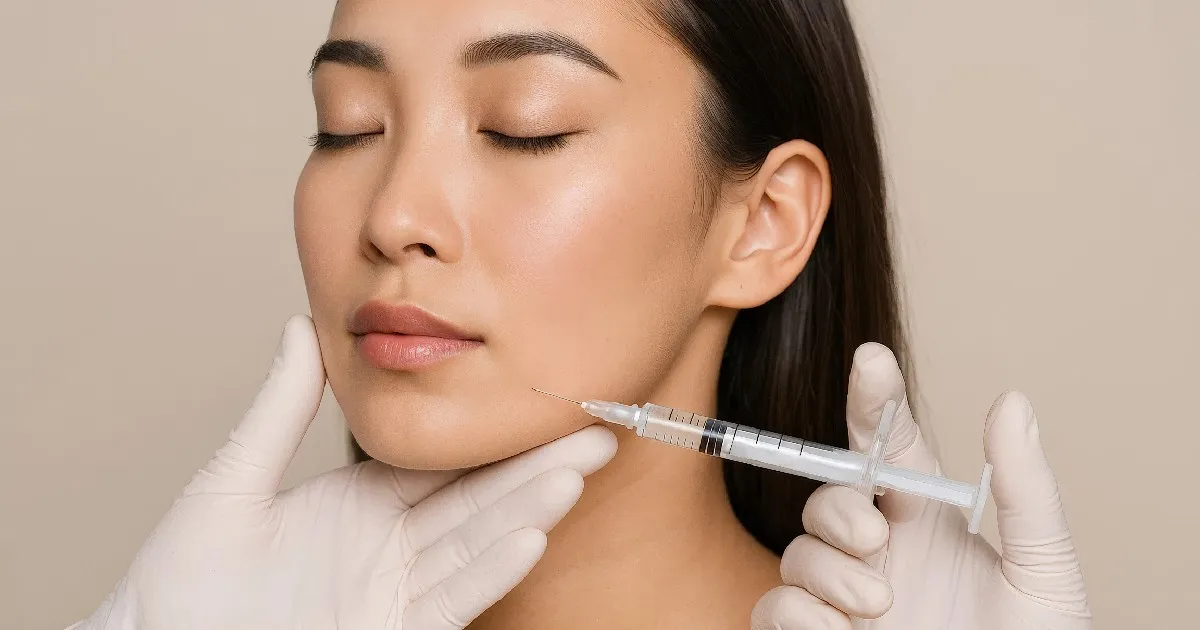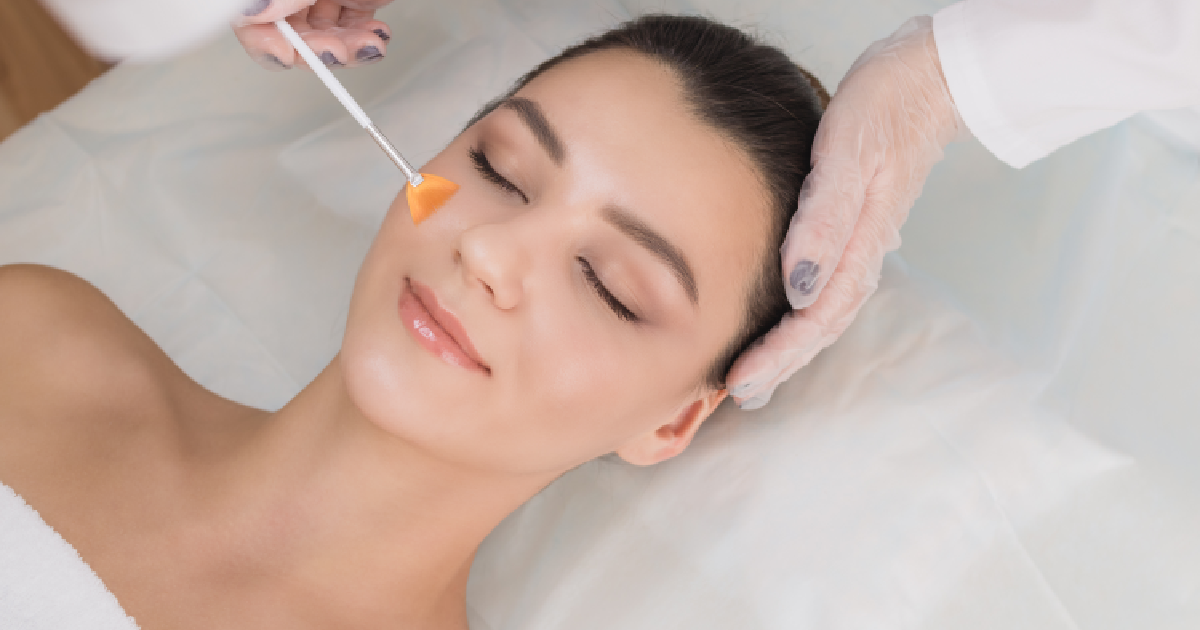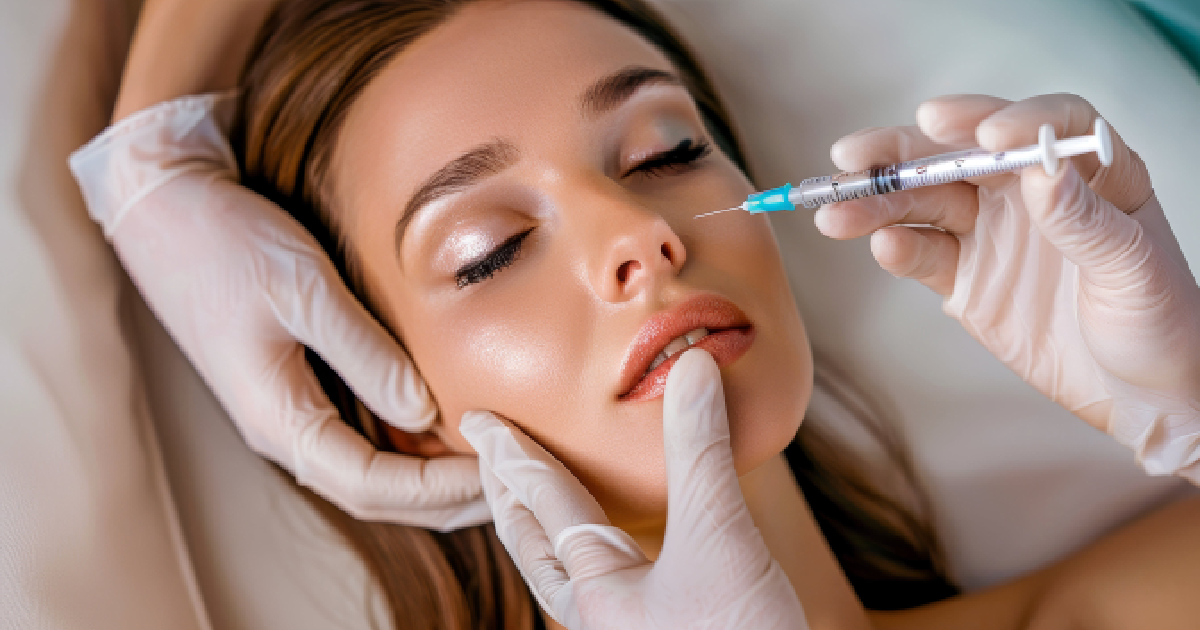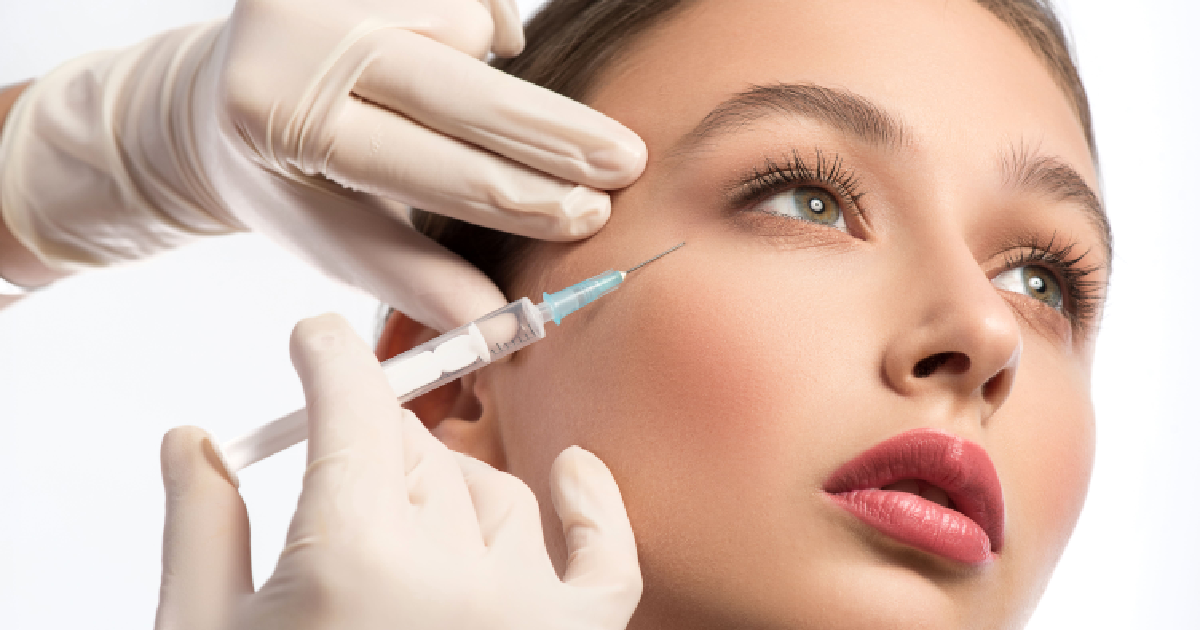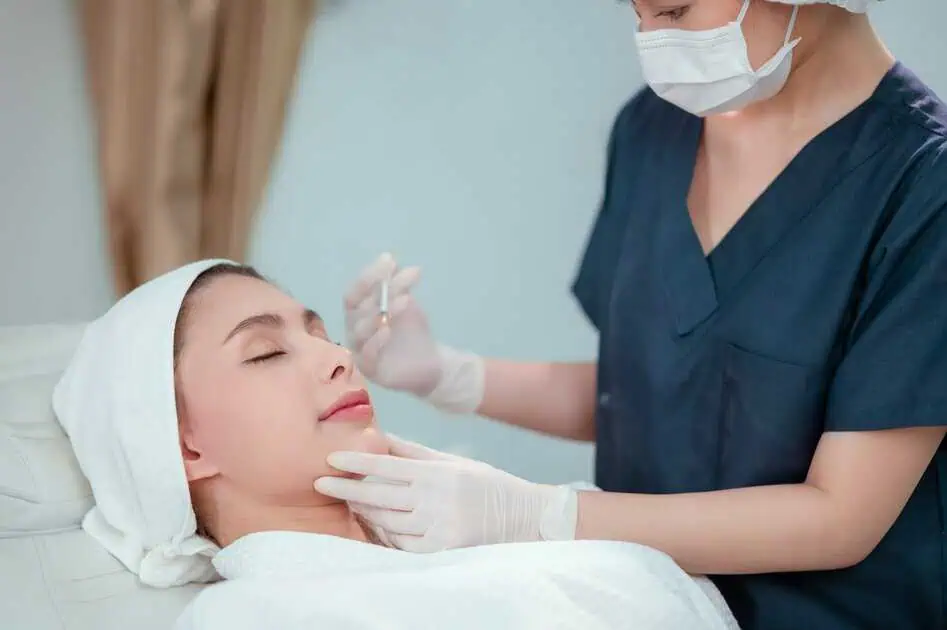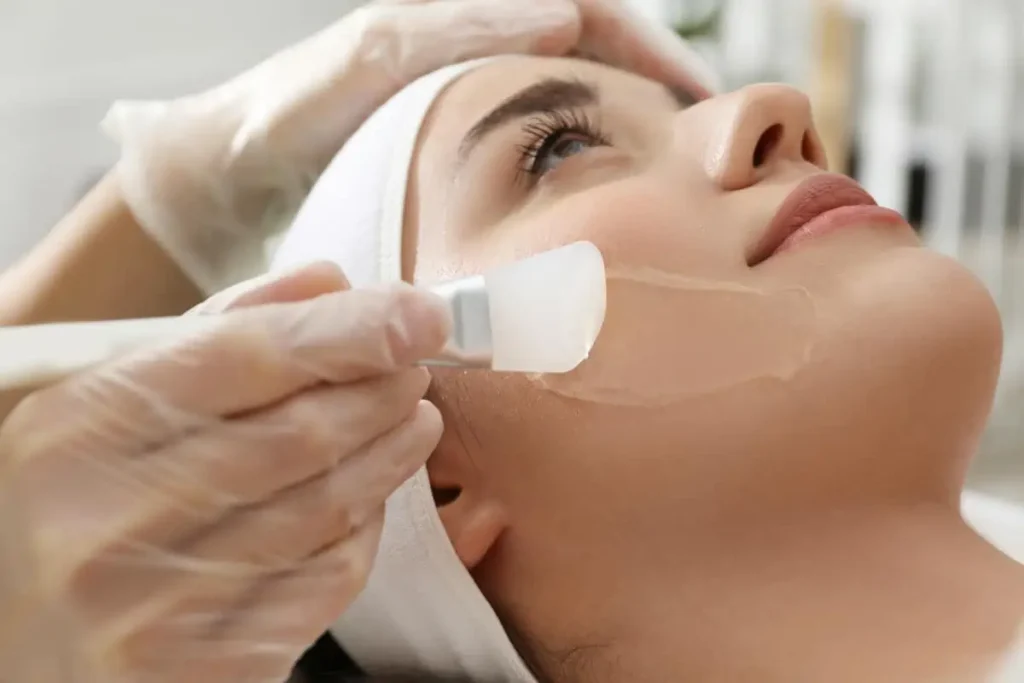
Table of Contents
Chemical peels are cosmetic treatments that involve applying a chemical solution to the skin, causing it to exfoliate and peel off. The new skin that replaces the old layer appears smoother, more even, and rejuvenated. These treatments offer a solution for individuals seeking to improve their skin’s texture and tone. Chemical peels have various strengths and formulations, making them suitable for addressing multiple skin concerns, including acne scars, uneven pigmentation, sun damage, and fine lines. However, selecting the right peel depends on skin type, desired results, and individual tolerance levels.
Chemical Peels Overview and Types
Chemical peels are cosmetic treatments that involve applying a chemical solution to the skin. This causes the outer layers of skin to exfoliate and peel off. This controlled shedding of the damaged outer layers reveals new, smoother, and more evenly toned skin.
There are different forms of chemical peels, categorized based on their strength and the specific chemicals used in the solution:
Superficial/Light Peels:
These are the mildest chemical peels, typically using alpha-hydroxy acids (AHAs) like glycolic or lactic acid. Superficial peels only penetrate the outermost layer of skin (stratum corneum) and are ideal for treating fine lines and mild pigmentation issues and improving overall skin texture and brightness. They are also well-suited for individuals new to chemical peels, offering minimal downtime and a gentle introduction to skin rejuvenation treatments.
Medium-Depth Peels:
Medium-depth peels reach deeper into the skin, targeting the middle layers of the epidermis and upper dermis. Typically formulated with trichloroacetic acid (TCA) or a blend of other acids, these peels are ideal for tackling more noticeable skin concerns, such as age spots, acne scars, and moderate wrinkles.
Deep Peels:
These are the strongest chemical peels, using phenol or trichloroacetic acid at high concentrations. Deep peels seep into the deepest layers of the skin (dermis) and are often used to treat severe sun damage, deep wrinkles, and precancerous growths. They have a longer recovery time and higher risks compared to other peel types.
Chemical Peels for Different Skin Types
The effectiveness and suitability of a chemical peel depend largely on an individual’s skin type. Different formulations and strengths are recommended for various skin types to achieve the desired results while minimizing potential side effects.
- Oily Skin: Peels containing alpha-hydroxy acids (AHAs) like glycolic acid or lactic acid are often recommended for those with oily or acne-prone skin. These peels can help unclog pores, reduce oil production, and improve overall skin texture.
- Dry Skin: Individuals with dry skin may benefit more from peels containing gentler ingredients like lactic acid or mandelic acid. These peels help exfoliate without stripping the skin of its natural oils, leaving it feeling smoother and more hydrated.
- Sensitive Skin: Those with sensitive skin may want to consider mild peels, such as those containing low concentrations of lactic acid or kojic acid. These peels offer gentle exfoliation while minimizing the risk of irritation or adverse reactions.
- Combination Skin: For combination skin, a customized approach may be necessary. Different peel solutions can be applied to different face areas, targeting specific concerns like T-zone oiliness and cheek dryness.
- Chemical Peels for Acne Scars: Chemical peels can be particularly effective in reducing the appearance of acne scars. Medium-depth peels containing trichloroacetic acid (TCA) or a combination of acids are often used to improve the texture and tone of scarred skin. These peels help promote collagen production and encourage the shedding of damaged skin cells, revealing smoother, more even-toned skin.
Chemical Peel Aftercare Tips
Proper aftercare will make a difference in optimal results and minimize potential complications after a chemical peel. Follow these tips:
The chemical peel recovery process for sensitive skin requires extra care. Use gentle, fragrance-free moisturizers and avoid direct sun exposure. Cold compresses can help alleviate discomfort or irritation. Consult your provider if severe redness or swelling persists.
Avoid picking or peeling off the skin as it flakes. Use a broad-spectrum sunscreen daily and stay out of direct sunlight. Gently cleanse and moisturize as recommended. Avoid harsh products, exfoliation, or makeup until fully healed.
Chemical Peels Before and After Results
Chemical peels can be a game-changer for enhancing skin texture and achieving a more even tone, but it’s important to keep expectations realistic. The results can differ based on the type of peel used, your unique skin condition, and the specific concerns you want to address. Some people notice subtle improvements, while others see more dramatic changes, especially after a series of treatments tailored to their skin’s needs.
For issues like uneven pigmentation, sun damage, and mild to moderate acne scarring, chemical peels can often deliver noticeable enhancement in the skin’s overall appearance. Many individuals experience a smoother, more radiant, and evenly toned complexion after undergoing a series of peels.
The benefits of chemical peels for wrinkles and fine lines stem from their ability to promote collagen production and cell turnover. As the outer layers of damaged skin peel off, the new skin that emerges appears smoother, with a diminished appearance of fine lines and wrinkles. Deeper peels, such as trichloroacetic acid (TCA) or phenol, can stimulate collagen production and promote cell renewal, leading to a more youthful and refreshed appearance.
Choosing the Right Chemical Peel
Selecting the appropriate chemical peel is crucial for achieving desired results while minimizing potential risks and side effects. Several factors should be considered when choosing the right peel:
- Skin Type and Condition: As discussed earlier, certain peel formulations are better suited to different skin types (oily, dry, sensitive, or combination). Additionally, the individual’s skin condition, such as acne, scarring, or pigmentation issues, will influence the choice of peel.
- Desired Outcome: The type of peel should align with the specific concerns or goals you wish to address. For example, superficial peels may be suitable for improving overall skin texture and brightness, while deeper peels are better suited for more significant issues like deep wrinkles or acne scars.
- Skin Tone and Sensitivity: Those with darker skin tones or sensitive skin may need to be more cautious when choosing a peel, as certain formulations can increase the risk of pigmentation problems or irritation.
- Lifestyle and Downtime: Deeper peels generally require more recovery time, which may not be suitable for individuals with busy schedules or those who cannot take extended time off work or social activities.
- Professional Consultation: An assessment with a qualified and experienced professional. They can evaluate your skin, confer your goals, and recommend the most appropriate peel based on your needs and circumstances.
Takeaway
If you’re ready to unveil smoother, more evenly-toned skin, it’s time to explore the transformative power of chemical peels at Arcanum Aesthetics. At Arcanum Aesthetics, we offer a wide range of chemical peel options, from gentle superficial peels to more intensive treatments, ensuring we have the right solution for every skin concern. Contact us and see which of our services will suit your needs!

